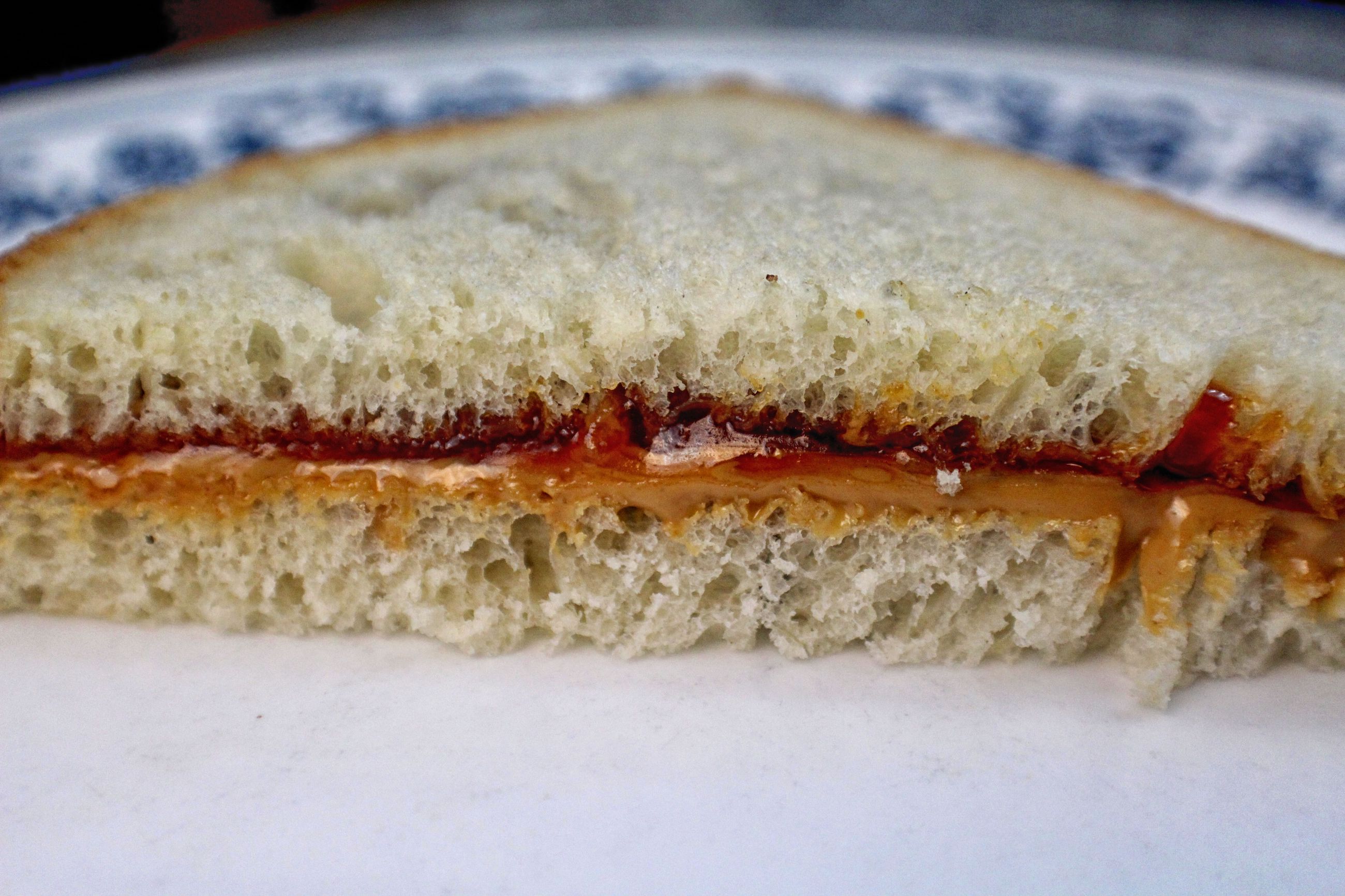Apulian Pucce
There are, as I’ve said before, essentially 2 kinds of sandwiches. One type of sandwich is filling-focused, a specific ingredient or combination of ingredients enclosed in bread–a BLT, for example, or pulled pork, or chicken salad. You can argue over which is the correct bread for such a sandwich, but a tuna melt is a tuna melt whether it’s served on rye or wheat or white bread or even a hamburger bun. The second type is bread-focused, and often named after the exact kind of bread the sandwich is served in. A hero, a hoagie, the Maltese ftira or the Beef on Weck of Buffalo. There may still be a particular ingredient or set of ingredients required for the sandwich to be correct, but without that specific bread, it is not that specific sandwich. A great sandwich starts after all not with great bread, but with the right bread, adorned with quality ingredients.
A Puccia–the singular form of the plural Pucce–is a type of bread roll, native to the southeastern Italian region Apulia, more specifically to the Salento peninsula, the heel to Italy’s boot. The etymology of the word puccia links it to bucellatum, the hardtack biscuits carried by soldiers of ancient Rome, but puccia is not a dry, crumbly rusk like hardtack. Instead, this contemporary bread was developed in the 1970s by a man named Giovanni Caccetti at a bar he opened in Trepuzzi called King.

These bread rolls are created by flattening a ball of semolina-based dough and baking it in a very hot wood-fired pizza oven for just a few minutes, resulting in a crisp-crusted, often leopard-spotted roll, round and puffed out but nearly hollow inside from rapid expansion during the very hot baking process. My own results, based on a recipe from the website Italian Recipe Book but enhanced with a bit of sourdough starter discard, looked very much like the examples I found with a Google Image Search.
There is not, to my knowledge, a set recipe for a puccia sandwich. It is, instead, a style of panino, a roll that acts as a canvas for any number of Italian style sandwich fillings: grilled zucchini or stuffed pork rolls called bombette or sausages with broccoli rabe or simply Italian style cold cuts with cheese and salad. There were, frankly, far too many possibilities for me to entertain, and I experienced a fair bit of analysis paralysis thinking about which combinations to try.
Then I found a menu from a bakery and restaurant in Apulia called Pizzeria e Pucceria dei Trulli that had a pretty concise list of Pucce featuring Italian salume and cheeses that I could get at my local Italian deli. I picked 6 of these and made them, with a few substitutions where ingredients were similar enough. I bought soppresatta (which will stand in where “salami” is needed), speck (which will also serve where prosciutto is called for), mortadella, capocollo (which will serve in the place of coppa), stracchino (not the same as stracciatella but they’re both soft and milky so I used stracchino for both), mild provolone, scamorza, and fresh mozzarella.
Let’s make some sandwiches! Sorry, some Pucce!
Caprese
mozz, pomodoro fresco, sale, olio, origano, rucola
For most of these sandwiches, even where it was not explicitly called for in the ingredients list, I drizzled a little olive oil onto the crumb of the Puccia before filling it–the menu description of this sandwich did explicitly mention olive oil though. The Trulli version of Caprese called for oregano rather than basil, but I like that classic combination of sweet basil with creamy fresh mozzarella and juicy tomatoes so I used fresh basil instead. These tomatoes were Camparis, which tend to still be good even in midwinter–the English translation on the menu mentioned cherry tomatoes but I thought the camparis would work better in a caprese sandwich, where the quality of the tomatoes is of vital importance.
The Trulli menu also did not mention balsamic vinegar but a drizzle of that richly sweet and sour syrup and the concentrated tannic flavor of grapeskins and wooden casks is a frequent and delicious enhancement for caprese salads and sandwiches in the US and I’m not ashamed to say I followed the crowd here, adding a light bead of balsamic over the mound of arugula I used to finish the sandwich.
Nobody will be surprised to learn that this was a terrific combination, with the bitter peppery flavor of the arugula rounding out the sweetness of the basil, the creaminess of the mozzarella, the juicy savor of the tomatoes and the deep tartness of the balsamic. If I haven’t said so previously, let me say it now: a caprese sandwich is elite vegetarian
Speck
mozz, speck, scamorza affumicata
Speck is a type of ham, cured and aged and hung to dry like prosciutto, but also smoked like Black Forest ham or Westphalian ham and hence a little stronger in flavor. Scamorza is a stretchy cheese, much like the typical low-moisture mozzarella typically seen in US grocery stores, that is sometimes smoked–though the version I was able to acquire is not a smoked scamorza.
Mindy specifically requested this sandwich, and while I wasn’t initially sold on the idea of it once I made it I enjoyed it. The fresh mozzarella and the (unsmoked, unfortunately) scamorza are relatively mild cheeses but the salty, smoky speck, rather than overwhelming the cheese, elevates it, seasoning the sweet milkiness of the cheeses with a porky, smoky funk.
Mortadella
mortadella, provolone
Mortadella is the original Italian salume that American bologna is based on–but is such a better, more delicate and yet also more flavorful experience that the comparison seems unfair. We’ve had mortadella sandwiches multiple times on the Tribunal–the Brazilian Farroupilha, the Persian Kālbās, my own homemade Pumpkin Spice Mortadella, as well as many sandwiches with mortadella as one ingredient among many. And probably the one thing I’ve done that more people have seen than any other is the Tiktok video I made about Anthony Bourdain’s favorite mortadella sandwich.
So it only makes sense that I would choose this simple mortadella-and-provolone sandwich as one of my handful of Pucce–I ordered what my local Italian deli Frangella calls their “imported” mortadella, studded with black peppercorns and pistachio nuts as well as the typical chunks of pork fat spaced throughout the meat, and a mild “slicing” provolone, the same kind they use in their Italian sub sandwiches. For the sandwich, I simply drizzled some olive oil onto the bread, piled on paper-thin slices of mortadella, and topped them with the cheese.
Soft and fatty mortadella, its porky aroma accented hints of pistachio and pepper, swathed in cheese and enveloped in a soft and sturdy bread–this is a good sandwich, though pan-frying the mortadella and melting the cheese wouldn’t be a bad idea either.
Coppa
coppa, pomodori secchi, stracciatella, rucola
This was my favorite of the sandwiches. I’m a sucker for capocollo–which I do not and will not ever call “gabagool”–and especially the milder, sweeter forms of capocollo or “coppa” as it’s sometimes called. Apulian capocollo is, I understand, a delicate salume, marinated in wine and smoked gently over oak wood and almond husks. It sounds delightful, but even this more attainable sweet capocollo is a delicious piece of cured pork. Capocollo is made from a neck muscle of the pig that is called coppa in Italian, and is similar in texture, fat content, and connective tissues to the pork butt–because the butt cut we use in the US is in part made up of this neck muscle.
Here this fragrant pork is combined with a soft, milky stracchino–or stracciatella in the original version, which is the soft and stretchy cheese that makes up the interior portion of a burrata–along with dried tomatoes, chewy, intensely sweet, sour, and savory all at once; and a handful of peppery/bitter arugula. It’s an almost perfect combination of flavors and while my American desire for excess wants to gild the lily by adding, say, oil and vinegar or giardiniera, it is not necessary.
If I were to only make one of these sandwiches again, this would be the one.
Crudo
mozz, pomodoro fresco, prosciutto crudo, origano, olio
Here is another simple sandwich, but complicated slightly–and improved, maybe–by the fact that I used speck in place of prosciutto. Fresh mozzarella topped with cherry tomatoes, seasoned with salt and oregano, with a layer of salty, smoky speck. It occupies a space somewhere between a BLT and a Caprese without really being similar to either. It’s missing the crisp texture and mayonnaise tang of the BLT, and the sweet basil flavor of the caprese. But the smoky, salty, porky funk of the speck is as good a foil for the sweet juicy tomatoes as bacon would be, and the peppery oregano may be a better seasoning for them than the basil. This sandwich would not work with the mayonnaise of a BLT, but the creamy mozzarella fills that role nicely.
Don’t get me wrong–I am not ready to give up BLTs or Caprese sandwiches. But I think there’s space inbetween them for this to exist.
Tre “S”
mozz, salame dolce, scamorza affumicata, stracchino
The last puccia I made was called the “Three S”–named such for the Salami, Scamorza, and Stracchino in the ingredients list–and I chose it because of a puzzling observation I’ve made about Italian sandwiches–not American Italian sandwiches, but sandwiches made by actual Italians. I have seen Italians comment negatively on sites like Reddit about American versions of Italian sandwiches, that we put too many different kinds of meat on a sandwich, obscuring the unique qualities of each–for example, an Italian sub in Chicago will most likely consist of capocollo, salami, and mortadella with provolone, lettuce, tomato, oil and vinegar, and some giardiniera if you like it spicy. In my experience, an Italian might say that’s a waste of all three, because you’re not tasting the subtleties of each meat–the nuttiness of the mortadella, the sweetness of the capocollo, the spicy funk of the salami. You’ll see this borne out on the sandwich menu I posted earlier on this page–none of the sandwiches use 2 different kinds of meats, though one does have the bizarre combination of salami with tuna.
Yet the same Italians see no problems combining three different kinds of cheese on a single sandwich. Like this one, with fresh mozzarella, scamorza, and stracchino all accompanying the featured sweet salami–I’m using a mild soppressata.
And perhaps in an Italian sandwich, the flavors a cheese adds are not as important as the textures–the juiciness of the fresh mozzarella, the softness of the stracchino, the firm elasticity of the scamorza. Their mild and milky flavors are not distinct enough to stand out from each other the way that I feel I can distinguish the sour fermented peppery flavor of a salami from the fatty nuttiness of a mortadella within the same sandwich.
But it’s a lot of cheese for one sandwich, maybe too much cheese for the mild, sweet salami that the recipe recommends. The warm and crusty bread softens them enough to erase some of the textural differentiation, and the result is–well it’s good salami and a whole lot of soft cheese, which isn’t an entirely bad thing.
There are plenty of other sandwiches that could be made with this bread–eggplant sandwiches, meatball sandwiches, sandwiches full of spicy pickled vegetables or saucy mushroom ragu–but I’m out of pucce and out of time. I’d love to hear your thoughts on what a great use of this bread would be though! Please comment and let me know!

I like sandwiches.
I like a lot of other things too but sandwiches are pretty great


























































Recent Comments